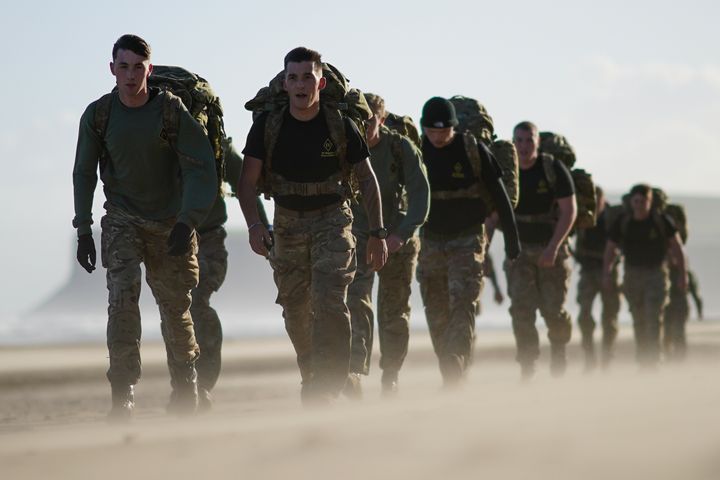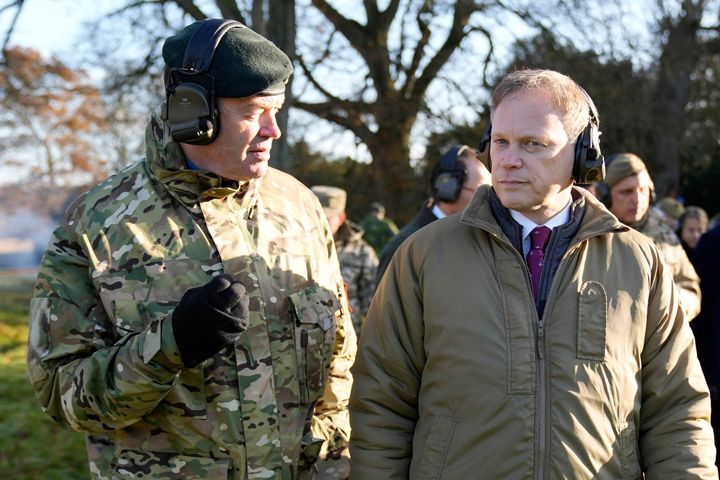
Worries about conscription have crept up the news agenda this week after a British Army chief warned that the armed services are currently too small.
The UK is not at war right now – but could conscription be a real possibility in the near future?
Why are we talking about conscription?
General Sir Patrick Sanders, chief of general staff, said on Wednesday that the UK would need to “train and equip” a citizen army.
The Army is currently on track to have around 72,500 fully trained soldiers by 2025 – down from over 800,000 in 1952.
Speaking to the International Armoured Vehicles conference in Twickenham on Wednesday, Sanders suggested that the UK should expand its forces to 120,000 within three years.
However, even that would not be “enough”, according to Sanders.
“Ukraine brutally illustrates that regular armies start wars; citizen armies win them,” Sanders said.
The chief also noted that he personally is not in favour of conscription, but suggested UK volunteers could sign up for any land wars.
He called on the government to think about how it would mobilise the UK if there was a war – particularly if the UK ends up in war with Russia.
What’s going on between the UK and Russia?
The UK, along with the rest of Nato, has been supporting Ukraine ever since Russia invaded its European neighbour in 2022.
It has been funding Kyiv, and sending it equipment but stopped short of actually fighting against Russia.
However, Moscow has publicly lashed out at the UK – along with the rest of the West – for supporting Ukraine throughout the war, and has falsely claimed the West started it by expanding Nato membership eastwards.
Defence secretary Grant Shapps also made an ominous warning recently, saying: “If our armed forces are not strong enough to deter future aggression from Moscow or Beijing, it will not be a small war to contend with but a major one.”
He said conflict is expected internationally in the next five years, and said he wants the UK to spend more GDP on defence.
President of the UN General Assembly Dennis Francis suggested that the idea of a third world war was not “beyond the realm of possibility” this week.
Top Nato military official, Admiral Rob Bauer, also said that civilians should be ready for an all-out war with Russia in the next two decades.
He said: “We have to realise it’s not a given that we are in peace. And that’s why we [Nato] are preparing for a conflict with Russia.”

So, could conscription be announced?
No, Rishi Sunak’s official spokesman has promised that military service will remain voluntary.
The spokesperson also dismissed speculation over whether the UK would be strong enough to fight Russia.
He said: “I think these kinds of hypothetical scenarios, talking about a conflict, are not helpful and I don’t think it’s right to engage with them.”
The Telegraph reported that No.10 supposedly did not want Sanders’ comments to go public.
Has the UK had conscription before?
Mandatory military conscription was unveiled during World War 1, in 1916, for men aged between 18 and 41.
Within months, it was extended to include married men, and in 1918, the upper age limit was increased to 51.
The only exemptions were for single parents, those in exempt professions (like clergymen and teachers) or those deemed “medically unfit” .
Even though the war was over by 1920, it was extended to help the government manage parts of the British Empire.
It was brought back in 1939 when World War 2 broke out. Initially, it was just limited conscription and applied to single men between 20 and 22, but by September that year, it was extended to all men between 18 and 41 who had registered to serve.
This time it included more exemptions like baking, farming, medicine, coal mining and engineering.
In 1941, Parliament widened the scope of conscription. All unmarried women and childless widows between 20 and 30 were liable to call-up.
Then there was the National Service Act of 1947, which introduced peacetime conscription. Men between 17 and 21 had to serve for 18 months, and were put on the reserve list for four years.
The service time increased to two years in 1950 due to the Korean War, but time on the reserve list was taken down to 18 months.
During both wars, there were “conscientious objectors”, who refused to serve. They had to explain their argument in front of a tribunal – if approved, they would be put in a non-combatant role. many were jailed , though.
Between 1949, and 1963, the last time the National Serviceman was demobilised, more than two million had been conscripted into the Armed Services.
What could conscription look like in the UK now, hypothetically?
Anyone suffering from senses deprivation – like hearing or sight loss – is not permitted to join the Army now, so they could be exempt.
Neurological conditions, skin conditions, psychiatric and cardiovascular issues are another obstacle, as are bone or joint problems.
Women may also be drafted in to serve on the frontline, as they have been allowed to serve in all combat positions since 2018.
